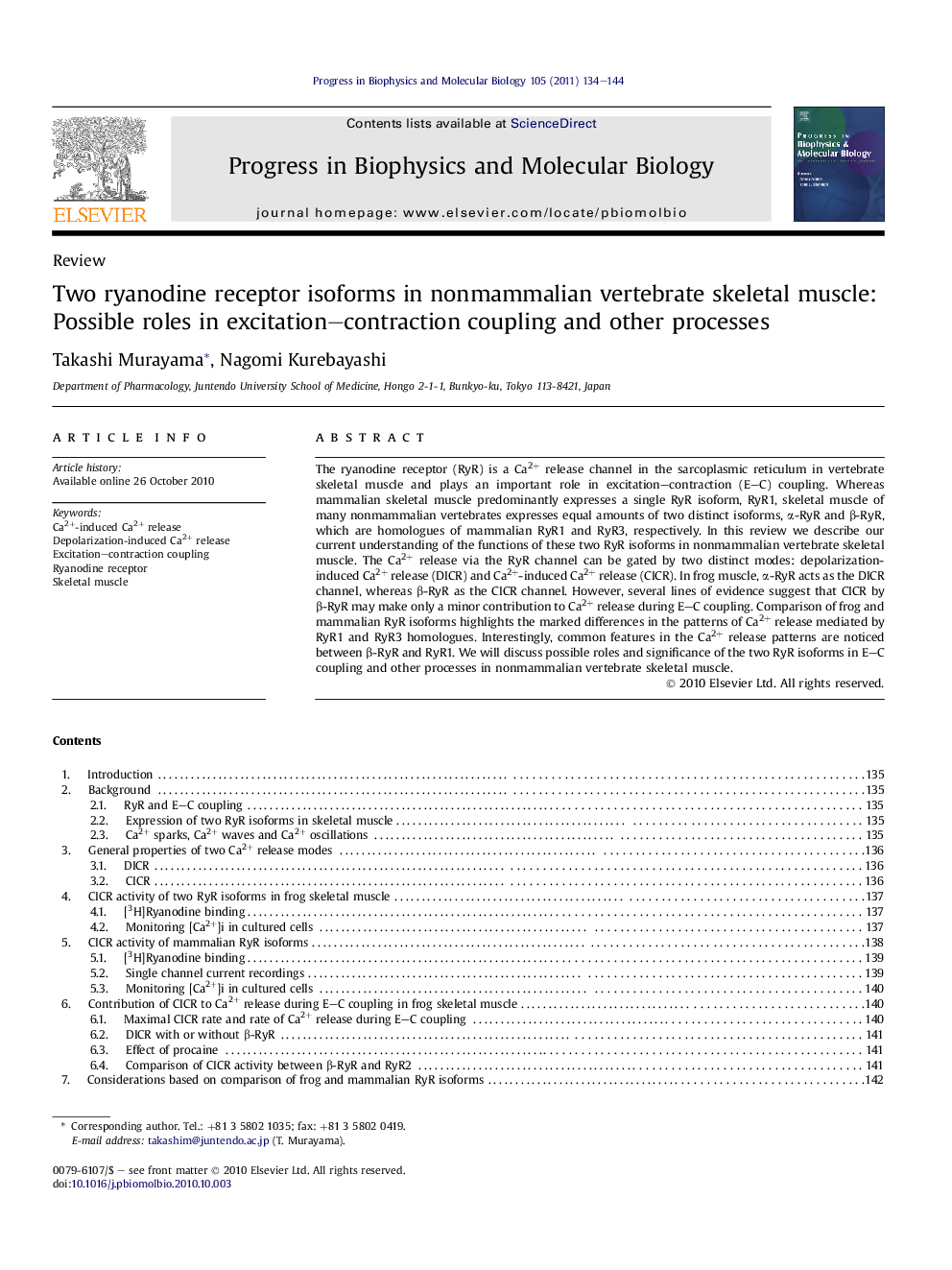| Article ID | Journal | Published Year | Pages | File Type |
|---|---|---|---|---|
| 2070220 | Progress in Biophysics and Molecular Biology | 2011 | 11 Pages |
The ryanodine receptor (RyR) is a Ca2+ release channel in the sarcoplasmic reticulum in vertebrate skeletal muscle and plays an important role in excitation–contraction (E–C) coupling. Whereas mammalian skeletal muscle predominantly expresses a single RyR isoform, RyR1, skeletal muscle of many nonmammalian vertebrates expresses equal amounts of two distinct isoforms, α-RyR and β-RyR, which are homologues of mammalian RyR1 and RyR3, respectively. In this review we describe our current understanding of the functions of these two RyR isoforms in nonmammalian vertebrate skeletal muscle. The Ca2+ release via the RyR channel can be gated by two distinct modes: depolarization-induced Ca2+ release (DICR) and Ca2+-induced Ca2+ release (CICR). In frog muscle, α-RyR acts as the DICR channel, whereas β-RyR as the CICR channel. However, several lines of evidence suggest that CICR by β-RyR may make only a minor contribution to Ca2+ release during E–C coupling. Comparison of frog and mammalian RyR isoforms highlights the marked differences in the patterns of Ca2+ release mediated by RyR1 and RyR3 homologues. Interestingly, common features in the Ca2+ release patterns are noticed between β-RyR and RyR1. We will discuss possible roles and significance of the two RyR isoforms in E–C coupling and other processes in nonmammalian vertebrate skeletal muscle.
